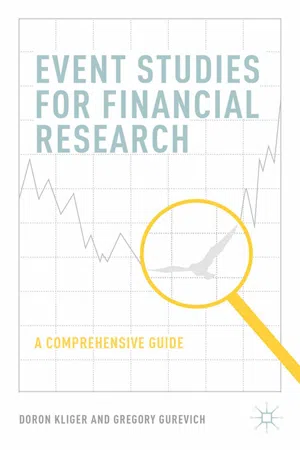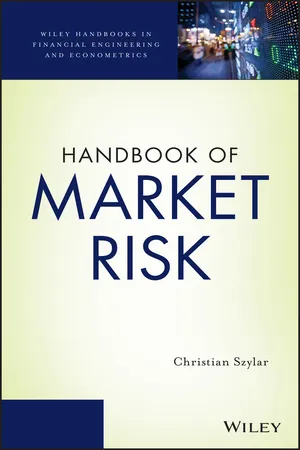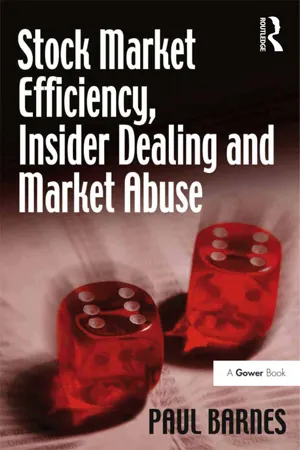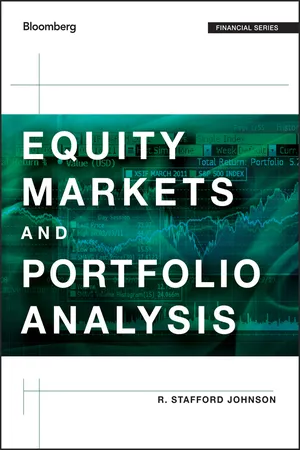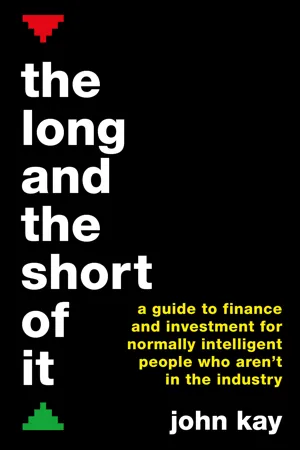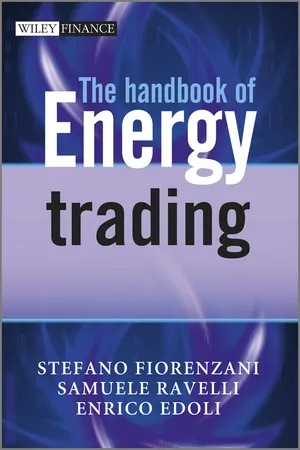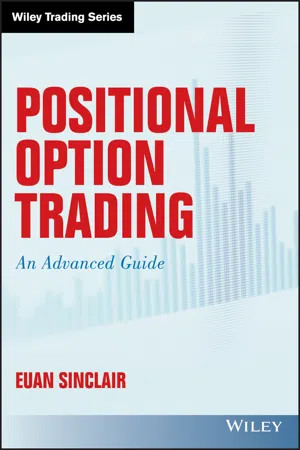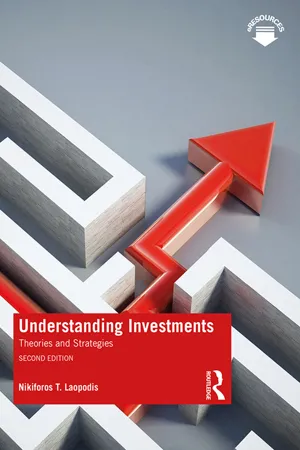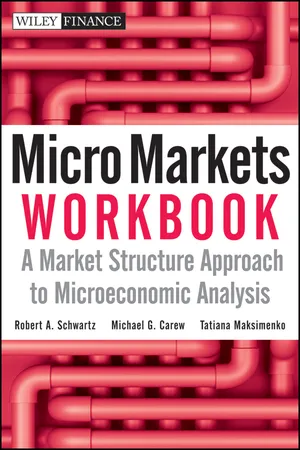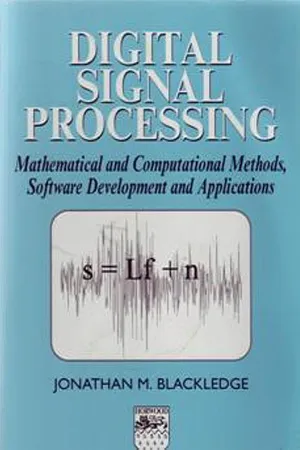Economics
Efficient Market Hypothesis
The Efficient Market Hypothesis (EMH) asserts that financial markets reflect all available information, making it impossible to consistently outperform the market through stock picking or market timing. It suggests that asset prices already incorporate all relevant information, making it difficult for investors to gain an edge. EMH comes in three forms: weak, semi-strong, and strong, each representing different levels of market efficiency.
Written by Perlego with AI-assistance
Related key terms
12 Key excerpts on "Efficient Market Hypothesis"
- eBook - ePub
Event Studies for Financial Research
A Comprehensive Guide
- D. Kliger, G. Gurevich(Authors)
- 2014(Publication Date)
- Palgrave Macmillan(Publisher)
Chapter 2 Infrastructure: The Efficient Market HypothesisDuring the past several decades, the Efficient Market Hypothesis (EMH) has been recognized as one of the basic building blocks of modern financial economics. Due to the profound effect of EMH on financial thought, researchers and practitioners nowadays perceive the rationale behind it as intuitive. In a nutshell, it asserts the following: as investors strive to earn profit from market trading, they exploit every useful piece of data, thereby causing market prices to reflect all of the relevant information at any given moment.Apparently, the origins of this idea of “wisdom of the crowds” are quite old. As Robert Shiller points out (1992, 438), attempts to provide a formal representation of the concept may be traced as far back as 1889, when George Gibson wrote in his book on major stock exchanges: “When shares become publicly known in an open market, the value which they acquire there may be regarded as the judgment of the best intelligence concerning them.”Following this logic, news arriving at the market must bring about an immediate and appropriate market reaction, and because news, by definition, relates to the unexpected component of the information, the future conduct of market prices is unpredictable. Consequently, traders’ inability to consistently “beat” the market, that is, generate systematic excess gains by trading, is a sign of market efficiency.1Such theoretical considerations led Louis Bachelier, in 1900, to the first formulation of what we know today as random walk theory , an immediate consequence of EMH. Random walk theory states that prices in efficient markets move randomly, thus precluding any possibility of using available information for generating sustained extra trading profits.In some instances, the alleged ability of exceptionally talented investors to beat the market turns out to be a plain fraud. One blatant example is the story of Bernard Lawrence Madoff. Started in 1960 as a small over-the-counter trading firm, Madoff’s empire eventually spread from Hollywood to Abu Dhabi, acquiring clients among prominent individual investors and solid institutions. - eBook - ePub
- Christian Szylar(Author)
- 2013(Publication Date)
- Wiley(Publisher)
Observers of the random walk in share prices naturally sought to explain their findings in terms of the efficiency with which new information was incorporated into prices. They reasoned that if there were delays as new relevant information became disseminated through the market, the price of the affect share would not move instantaneously to the new equilibrium level reflecting the information, but would trend toward the new level over time. This might happen gradually or quite rapidly, but would still not be instantaneous. If this were the case, then there would be periods (immediately following the release of new information) when price trends could be discerned. This in turn would mean that excess returns could be made, by either (a) buying the shares before the price had finished moving up to the new equilibrium level justified by good news or (b) selling before the price had finished moving down to the new equilibrium level justified by bad news. The fact that these early studies found no such trends or correlations was seen as powerful support for the argument that the markets were efficient. It seemed to be the case that at any point in time, all available information was reflected in the price; the next move could not be predicted from the last one, because the next piece of news would not be genuine news if it was already implied in past prices. This finding was the central feature of what became known as the Efficient Markets Hypothesis (EMH)—the theory that the major stock markets, in particular those of the USA and UK, while not perfect, are at least efficient.2.2 The Efficient Market Hypothesis
In George Gibson's book The Stock Markets of London, Paris, and New York, published in 1899, we find one of the first references to the question of market efficiency. He writes, “in an open market, when the shares become publically know, the value they obtain may be considered to reflect the most intelligent appreciation possible.”The Efficient Market Hypothesis (EMH) was first formally proposed in University of Chicago professor Eugene Fama's 1970 paper “Efficient Capital Markets: A Review of Theory and Empirical Work.” In a series of publications, Eugene Fama became the father of market efficiency. To beat the market, stock pickers need to discover mispricings in stocks, but the EMH claims that the market is a ruthless mechanism acting instantly to arbitrage away such opportunities, claiming that the current price of a stock is always the most accurate estimate of its value (known as “informational efficiency”).The EMH has evolved into a concept that a stock price reflects all available information in the market, making it impossible to have an edge. There are no undervalued stocks, it is argued, because there are smart security analysts who utilize all available information to ensure unfailingly appropriate prices. Investors who seem to beat the market year after year are just lucky - Paul Barnes(Author)
- 2016(Publication Date)
- Gower(Publisher)
CHAPTER 3The Efficient Capital Markets HypothesisIt is often said (but usually only by economists) that whilst individuals may not act rationally some of the time, most people do most of the time. If we wished to forecast what most people would do in a situation, it would simply be a matter of establishing what a rational person would do. Hence, the market price which represents the collective view of investors, and in particular experts, is said to be ‘rational’ and what is known as the Efficient Capital Markets Hypothesis (ECMH), the subject of this chapter, is a part of ‘rational economics’. See the Appendix in this chapter for a mathematical definition of the ECMH.The theory
The idea that the stock market is informationally efficient and that this leads to allocative efficiency is probably an old one. However, it was not until the early 1960s that the full implications of stock market efficiency were studied. These were brought together in 1970 by Eugene Fama who defined the hypothesis that ‘security prices fully reflect all available information’ (1970, p. 383) together with a number of subhypotheses. Fama said that there were three forms of stock market efficiency: weak, semi-strong and strong.THE WEAK FORM
This states that as all new information about the company is immediately and fully reflected in and by a new price movement. As we are unable to forecast new news, and past news is fully impounded in an existing share price, it follows it is not possible to predict new share movements from old share price movements. It also follows that the movement in a share price on one day is not correlated with the share price change the following day. This is often referred to as a ‘random walk’. The principal implication of this is that an investor cannot use past share price movements to predict new price movements in an attempt to earn ‘abnormal returns’. (Abnormal returns are defined as the earning of a higher return on a stock or portfolio than that which is on average earned by the market as a whole. Here and elsewhere, ‘return’ includes both the dividends received during the period plus the increase in the share price as defined in Chapter 2- eBook - ePub
- R. Stafford Johnson(Author)
- 2014(Publication Date)
- Bloomberg Press(Publisher)
CHAPTER 15 Efficient MarketsIntroduction
One of the most influential theories to emerge out of the finance literature over the last 50 years is the Efficient Market Hypothesis (EMH). Introduced by Burton Malkiel in the 1960s, the EMH precipitated a considerable amount of controversy between proponents of the EMH (primarily academicians) and practitioners who employed fundamental and technical analysis. EMH proponents argued that if the market consisted of a sufficient number of fundamentalists, then their actions would force the market price of a security to its equilibrium value. For example, if a security was underpriced, the fundamentalists would try to buy the security, pushing its market price toward its equilibrium value. In contrast, if a security was overpriced, the fundamentalists would short or sell it, pushing its market price down to its equilibrium value. Thus, according to the proponents of the EMH, with enough fundamentalists, the market price of a security is equal to its equilibrium price. Similarly, EMH proponents argued that if the market consisted of enough technicians, then their actions would eliminate the possibility of earning any abnormal return from identifying trends in security prices. As we noted in the last chapter, if a stock traded low on Monday and high on Friday, then technicians would detect this trend and would buy on Monday and sell on Friday. These actions would augment the price of the stock on Monday and lower it on Friday, thereby eliminating the trend and the possibility of earning an excess profit. If the EMH holds, in the sense that the market consists of a sufficient number of fundamentalists and technicians, then investors would be unable to earn abnormal returns from either fundamental or technical strategies. Thus, the EMH questioned the usefulness of fundamental and technical analysis. In their defense, fundamentalists and technicians argued that the efficient market theory was an oversimplification of how the market functions and that EMH proponents were naive. - eBook - ePub
The Long and the Short of It
A guide to finance and investment for normally intelligent people who aren't in the industry
- John Kay(Author)
- 2016(Publication Date)
- Profile Books(Publisher)
You regularly hear statements like these in popular discussion. The weak form of the Efficient Market Hypothesis claims that no such statement can ever be justified because prices move independently of their history. The probability that they will rise next year, or next month, or today, is unaffected by whether prices rose yesterday afternoon, or last week, or in the first quarter of 2016.The weak EMH is a blow for people who rely on projections of historical trends, or identification of recurrent patterns, to make their investment decisions – most of all for chartists, whom I’ll describe in the next chapter. But the weak version does nothing to discourage people from looking at fundamental values. Rather the opposite – the weak EMH encourages you to believe that you might make money at the expense of noise traders by close attention to fundamentals.Thus there is a considerable practical difference between weak and strong EMH. Strong EMH – that everything that could be known about securities is already in their price – essentially rules out any possibility of investment skill. Legendary investors such as Buffett have simply been lucky. No research or analysis can be useful, because its results will already be reflected in the market. Put like this, the theory seems absurd.Indeed, the strong version of EMH contains an inherent contradiction. If it were the case that research and analysis could never be profitable, because the result of that research and analysis would always be ‘in the price’, why would anyone undertake such research and analysis? If markets were always efficient, what could be the process by which they become efficient?The semi-strong version of the Efficient Market Hypothesis is less extreme, claiming only that information is ‘in the price’ if publicly available. Thus the semi-strong version does not exclude the possibility that insightful new analysis, unpublished or not yet widely circulated, might be valuable to those who possess it. It certainly permits possibilities of profit from trading on private information. The investment banker who knows of a planned takeover, the corporate executive who knows that the coming results will be worse than those generally expected, can both deal advantageously on the basis of this inside information. - eBook - ePub
- Stefano Fiorenzani, Samuele Ravelli, Enrico Edoli(Authors)
- 2011(Publication Date)
- Wiley(Publisher)
Chapter 1 Energy Markets as Efficient Markets 1.1 The “Efficient Market Hypothesis”Are energy markets efficient markets? In what sense can a commodity market be considered efficient? And what are the trading implications of market efficiency? These are the questions we would like to answer in this introductory chapter. The third question, in particular, has a strong impact on the overall meaning of the book, but obviously, before discussing the trading implications of market efficiency we need to define the concept formally and to try to understand if energy markets can be considered efficient in some sense.The theoretical origins of the Efficient Markets Hypothesis (EMH) are connected with pioneering studies of modern financial economics. The first formal definition and in depth analysis must surely refer to the studies of Roberts (1967) and Fama (1970). Whenever we say that a market, a financial market particularly, is efficient we basically refer to efficiency in the informational sense. In fact, in a competitive market, asset prices dynamically reflect relevant information flows and consequently a certain market is more informationally efficient if it is able to reflect more relevant information in its asset prices. Information is thus relevant if it can predict future price dynamics. According to Fama's original definition, a capital market is said to be efficient with respect to a certain information set if security prices would be unaffected by revealing that information to all market participants. Hence, the description of the information set is the base for the definition of market efficiency.The classic taxonomy of the information set exposed by Roberts (1967) characterizes three different forms of market efficiency: weak, semistrong and strong.In weak form market efficiency the information set considered includes only the history of prices themselves. If the market we are considering is efficient in the weak form, revealing the whole history of security prices to market participants wouldn't impact their behaviour in the market. In other words, future prices cannot be predicted by analyzing prices from the past. Under this framework, price realizations are time independent of each other. Knowing last price realization or the whole history of prices wouldn't change the ability to predict future prices. This form of market efficiency has strong mathematical and trading implications and will be discussed throughout the chapter. - eBook - ePub
Scientific Method
How Science Works, Fails to Work, and Pretends to Work
- John Staddon(Author)
- 2017(Publication Date)
- Routledge(Publisher)
Efficient Market Hypothesis (EMH). The EMH is worth study from a methodological point of view because its conceptual basis, what it actually means, and how it may actually be tested, is so elusive. If we can understand the EMH, perhaps we can also learn something about the strengths and weaknesses of economic theory in general. Some of the discussion is unavoidably technical. I will try to make all as clear as possible.Efficiency is another term from physical science. Like velocity, it is also a ratio: the efficiency of an engine is the ratio between physical work out divided by chemical or electrical energy in: miles per gallon or kilowatt hour. As we will see, market efficiency is much less easily defined. The seminal paper is: Efficient capital markets: A review of theory and empirical work (1970),2 by Chicago economist Eugene Fama. Scholarly impact and a Nobel Prize in 2013 garnered 18,000 citations in 2017: not quite as popular as prospect theory , but a hit nevertheless. In what follows, I will argue that the notion of efficient market is conceptually flawed.3 Any scientific model must be testable. But market efficiency is defined in a way that makes it impossible to measure and almost impossible to test. Efforts to do so have led to what look uncomfortably like wild-goose-chase attempts to capture an ever-mutating market process whose causal laws are not, and perhaps never will be, fully understood. To anticipate my conclusion: the problem with the EMH is that it is presented as a model but it is really an unfalsifiable claim , that the market cannot be beaten. Above-average profits cannot be made on the basis of publicly available information. But let’s take the model idea seriously and see where it leads us.Just how is market efficiency defined? Fama writes: “A market in which prices always ‘fully reflect’ available information is called ‘efficient.’” This is the Efficient Market Hypothesis. Fama calls it a “simple statement,” but that is the one thing it is not. The definition differs from the way efficiency is used in physical science in several ways. First, it is not a ratio; second, it depends on something called information - eBook - ePub
The Long and the Short of It (International edition)
A guide to finance and investment for normally intelligent people who aren't in the industry
- John Kay(Author)
- 2016(Publication Date)
- Profile Books(Publisher)
You regularly hear statements like these in popular discussion. The weak form of the Efficient Market Hypothesis claims that no such statement can ever be justified because prices move without knowledge of their history. The probability that they will rise next year, or next month, or today, is unaffected by whether prices rose yesterday afternoon, or last week, or in the first quarter of 2011.The weak EMH is a blow for people who rely on projections of historical trends, or identification of recurrent patterns, to make their investment decisions – most of all for chartists, whom I’ll describe in the next chapter. But the weak version does nothing to discourage people from looking at fundamental values. Rather the opposite – the weak EMH encourages you to believe that you might make money at the expense of noise traders by paying close attention to fundamentals.There is a considerable practical difference between weak and strong EMH. Strong EMH – which postulates that everything that could be known about securities is already in their price – essentially rules out any possibility of investment skill. Legendary investors such as Buffett have simply been lucky. No research or analysis can be useful, because its results will be reflected in the market. Put like this, the theory seems absurd.Indeed, the strong version of EMH contains an inherent contradiction. If it were the case that research and analysis could never be profitable, because the result of that research and analysis would always be ‘in the price’, why would anyone undertake such research and analysis? If prices were always efficient, what could be the process by which they become efficient?The semi-strong version of the Efficient Market Hypothesis is less extreme, claiming only that information is ‘in the price’ if publicly available. Thus the semi-strong version does not exclude the possibility that insightful new analysis, unpublished or not yet widely circulated, might be valuable to those who possess it. It certainly permits possibilities of profit from trading on private information. The investment banker who knows of a planned takeover and the corporate executive who knows that the coming results will be worse than is generally expected can both deal advantageously on the basis of this inside information. - eBook - ePub
Positional Option Trading
An Advanced Guide
- Euan Sinclair(Author)
- 2020(Publication Date)
- Wiley(Publisher)
The traders' concept of the Efficient Market Hypothesis (EMH) is “making money is hard.” This isn't wrong, but it is worth looking at the theory in more detail. Traders are trying to make money from the exceptions to the EMH, and the different types of inefficiencies should be understood, and hence traded, differently.The EMH was contemporaneously developed from two distinct directions. Paul Samuelson (1965) introduced the idea to the economics community under the umbrella of “rational expectations theory.” At the same time, Eugene Fama's studies (1965a, 1965b) of the statistics of security returns led him to the theory of “the random walk.”The idea can be stated in many ways, but a simple, general expression is as follows: A market is efficient with respect to some information if it is impossible to profitably trade based on that information. And the “profitable trades” are risk-adjusted, after all costs. So, depending on the information we are considering, there are many different EMHs, but three in particular have been extensively studied:- The strong EMH in which the information is anything that is known by anyone
- The semi-strong EMH in which the information is any publicly available information, such as past prices, earnings, or analysts' studies
- The weak EMH in which the information is past prices
The EMH is important as an organizing principle and is a very good approximation to reality. But, it is important to note that no one has ever believed that any form of the EMH is strictly true. Traders are right. Making money is hard, but it isn't impossible. The general idea of the theory and also the fact it isn't perfect is agreed on by most successful investors and economists.“I think it is roughly right that the market is efficient, which makes it very hard to beat merely by being an intelligent investor. But I don't think it's totally efficient at all. And the difference between being totally efficient and somewhat efficient leaves an enormous opportunity for people like us to get these unusual records. It's efficient enough, so it's hard to have a great investment record. But it's by no means impossible.” - eBook - ePub
Understanding Investments
Theories and Strategies
- Nikiforos T. Laopodis(Author)
- 2020(Publication Date)
- Routledge(Publisher)
The two capital market models we have learned, the capital asset pricing model and the arbitrage pricing theory, assumed (or were built upon) market efficiency. Their prediction is that the security’s price is fair, or in equilibrium. The paradox is, however, that both the CAPM and the APT imply market efficiency, but the reverse is not important. In other words, an efficient market can exist even when the models do not hold, suggesting that the Efficient Market Hypothesis does not imply applicability of either the CAPM or the APT. Moreover, as we noted earlier, in view of the EMH being silent on the sources of information in determining the risk-return trade-off of a security (using either the CAPM or the APT), if a shock occurs in the real economy investors would not be able to derive either model’s parameters consistent with efficient pricing. Thus asset pricing models (and modern finance theory, in general) do not help us to trace the implications of significant changes in the real sectors of the economy. Finally, in view of the existence of several anomalies (see next section), both asset pricing models need to be updated to reflect some of these anomalous situations (as we also mention in subsection 3.3).Finally, what do people say about EMH and the 2008 financial crisis? The short answer is that it is widely believed that EMH caused it. Read Box 9.3 to find out if that is true or not. The Market Flash box explains why the Nobel in economic sciences committee in 2014 decided to split the economic prize between Eugene Fama and Robert Shiller.MARKET FLASHThe 2013 Nobel Prize in Economics
The Nobel committee recognized work on the Efficient Market Hypothesis (EMH) by awarding the economics prize jointly to EMH pioneer Eugene Fama and EMH critic Robert Shiller and Lars Peter Hansen.What does it mean for markets to be efficient? According to Fama, security prices fully reflect all available information. But if the information at hand is that a company just crushed its earnings target, how is the market supposed to reflect that? Are prices supposed to double? To be able to make any statement about market efficiency, you need an equilibrium model of how security prices are set. With such a model you can make predictions that you can actually observe and test. But it’s always a joint hypothesis and this is referred to as the joint hypothesis problem. As an example, suppose your joint hypothesis is that EMH holds and the Capital Asset Pricing Model is how prices are set. The EMH says the market will get this right. So, you test CAPM and find evidence against this coupling. The problem is, you don’t know which of the two (or both) ideas you are rejecting. EMH may be true, but CAPM may be a poor model of how investors set prices because there are other risk factors besides market risk. Thus, academics have split into two groups: risk versus behavior. The risk group says the reason we are rejecting the joint hypothesis of market efficiency and CAPM is that CAPM is the wrong model of how prices are set. The behaviorists argue that the reason we’re rejecting the joint hypothesis of market efficiency and CAPM is that markets aren’t efficient because behavioral biases exist (see section 9.4 on that). - eBook - ePub
Micro Markets Workbook
A Market Structure Approach to Microeconomic Analysis
- Robert A. Schwartz, Michael G. Carew, Tatiana Maksimenko(Authors)
- 2010(Publication Date)
- Wiley(Publisher)
Important formulations (such as the Capital Asset Pricing Model) are based on the assumption that expectations are homogeneous. In real-world markets, however, divergent expectations is the name of the game, and this paradigm shift has major implications (concerning, for instance, how equilibrium prices are discovered in a micro market). 5. Informational efficiency is a multidimensional concept. We consider the efficiency with which investors exploit existing information, the efficiency with which they pursue information-gathering activities, the informational accuracy of equilibrium prices, and the dynamic efficiency of information dissemination. These are not simple matters. A lot is required for a market to be informationally efficient. 6. As we turn next to a test of market efficiency, we focus on equity markets and on informational efficiency. How does one know, you might wonder, whether all existing information is fully reflected in stock prices? It turns out that there is a very clever way to infer whether prices are being efficiently set. The way involves the Efficient Market Hypothesis (EMH). The hypothesis is that information is fully reflected in stock prices, and the best-known test of the EMH is whether stock prices follow random walks. 7. Here is the logic behind the random-walk tests: If all information is reflected in a stock’s price, then there is no way to predict how the stock’s price will change in the future, because we would have no way of knowing what the new information will be. But what if future stock price changes are correlated with past stock price changes? With a correlation pattern, future price changes could be predicted from past price changes. But predictability itself is information, and acting on this information eliminates the very correlation patterns that it is based on. Once any correlation message is incorporated in price, the correlation patterns can no longer exist and price must be following a random walk. 8 - eBook - ePub
Digital Signal Processing
Mathematical and Computational Methods, Software Development and Applications
- Jonathan M Blackledge(Author)
- 2006(Publication Date)
- Woodhead Publishing(Publisher)
Why should prices follow Gaussian random walks? It is often stated that asset prices should follow random walks because of the Efficient Market Hypothesis (EMH). The EMH states that the current price of an asset fully reflects all available information relevant to it and that new information is immediately incorporated into the price. Thus, in an efficient market, the modelling of asset prices is really about modelling the arrival of new information. New information must be independent and random, otherwise it would been anticipated and would not be new. The EMH implies independent price increments but why should they be Gaussian distributed? The Gaussian PDF is chosen because most price movements are presumed to be an aggregation of smaller ones, and sums of independent random contributions have a Gaussian PDF.The arrival of new information actually sends ‘shocks’ through the market as people react to it and then to each other’s reactions. The EMH assumes that there is a rational (sensible) and unique way to use the available information and that all agents possess this knowledge. Moreover, the EMH assumes that this chain reaction happens instantaneously. In an efficient market, only the revelation of some dramatic information can cause a crash, yet post-mortem analysis of crashes typically fail to (convincingly) tell us what this information must have been.In order to understand the nature of an economy, as with any other signal, one needs to be clear about what assumptions are being made in order to develop suitable models and have some way to test them. We need to consider what is happening at the microscopic level as well as the macroscopic level on which we observe financial time series, which are often averages of composites of many fundamental economic variables. It is therefore necessary to introduce some of the approaches and issues associated with financial engineering which is given in the following sections.17.13.1 Risk .v. Return: Arbitrage
For many years, investment advisers focused on returns with the occasional caveat ‘subject to risk’. Modern Portfolio Theory (MPT) teaches that there is a trade off between risk and return. Nearly all finance theory assumes the existence of risk-free investment, e.g. the return from depositing money in a sound financial institute or investing in equities. In order to gain more profit, the investor must accept greater risk. Why should this be so? Suppose the opportunity exists to make a guaranteed return greater than that from a conventional bank deposit say; then, no (rational) investor would invest any money with the bank. Furthermore, if he/she could also borrow money at less than the return on the alternative investment, then the investor would borrow as much money as possible to invest in the higher yielding opportunity. In response to the pressure of supply and demand, the banks would raise their interest rates. This would attract money for investment with the bank and reduce the profit made by investors who have money borrowed from the bank. (Of course, if such opportunities did arise, the banks would probably be the first to invest our savings in them.) There is elasticity in the argument because of various friction factors such as transaction costs, differences in borrowing and lending rates, liquidity laws etc., but on the whole, the principle is sound because the market is saturated with arbitrageurs whose purpose is to seek out and exploit irregularities or miss-pricing.
Index pages curate the most relevant extracts from our library of academic textbooks. They’ve been created using an in-house natural language model (NLM), each adding context and meaning to key research topics.
